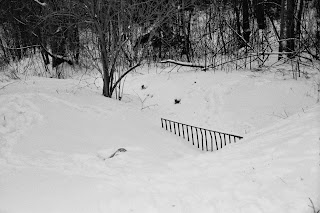i have been collecting images of animals from picture books and old books about nature for a few months. the man/animal relationship is one of extreme distance in most circumstances. john berger explains in his excellent essay - why look at animals? - the reasons for this distance. another excellent english writer and political philosopher on this subject is john gray, his book 'straw dogs, thoughts on humans and other animals' ends with the following short paragraph:
'Other animals do not need a purpose in life. A contradiction to itself, the human animal cannot do without one. Can we not think of the aim as being simply to see?'
animals and meaning:
i have been reading about traveller culture and animals. in some traveller cultures animals have special significance. owls are bad luck and associated with death.
frogs are considered dirty and to some extent evil because they live both in and out of water
hedgehogs are revered, they are considered especially clean
and are known to be eaten.
i find it interesting the anthropomorphising of animals; we give animals human characteristics and attributes, even seeing some animals as 'bad' (for example snakes, rats, frogs) or dirty or evil.
i had a mouse in my room last year. it came, it went. when it came i talked to it, or shouted rather, to try and find some polite way of saying - well, this is my space and you shouldn't be here - it made me realise that it is easy to think that other species are somehow less important, that they have less right to live, which is not true.
don't look away.
Mr Sammler's Planet by Saul Bellow, opening paragraph
'You had to be a crank to insist on being right. Being right was largely a matter of explanations. Intellectual man had become an explaining creature. Fathers to children, wives to husbands, lecturers to listeners, experts to laymen, colleagues to colleagues, doctors to patients, man to his own soul, explained. The roots of this, the causes of the other, the source of events, the history, the structure, the reasons why. For the most part it went in one ear out the other. The soul wanted what it wanted. It has its own natural knowledge. It sat unhappily on superstructures of explanation, poor bird, not knowing which way to fly.'
don't look away.
don't look away.
reading surfaces
'resistant and subliminal paths of information'
images:
these two are the surfaces of a table in the print room at the Minerva Art Academy in Groningen. i took these in the first week of the MFA course, but when i came across the sentence above it made me think about the difficulty of accessing some mental processes.
don't look away.
images:
these two are the surfaces of a table in the print room at the Minerva Art Academy in Groningen. i took these in the first week of the MFA course, but when i came across the sentence above it made me think about the difficulty of accessing some mental processes.
don't look away.
found
i found these photos in a collection of my grandmother who died ten years ago. some of them i don't know where or why they were taken. the one of me - my plate of bacon and beans is slipping off my lap - using my knife and fork like a true left hander - is it breakfast or dinner?
the start of something new
studio:
in the studio i am at the beginning stages of making a stop motion animation - creating set ups, selecting images, reading about storytelling, analysing my collection of objects, thinking about and recording sound.
don't look away.
Subscribe to:
Posts (Atom)





